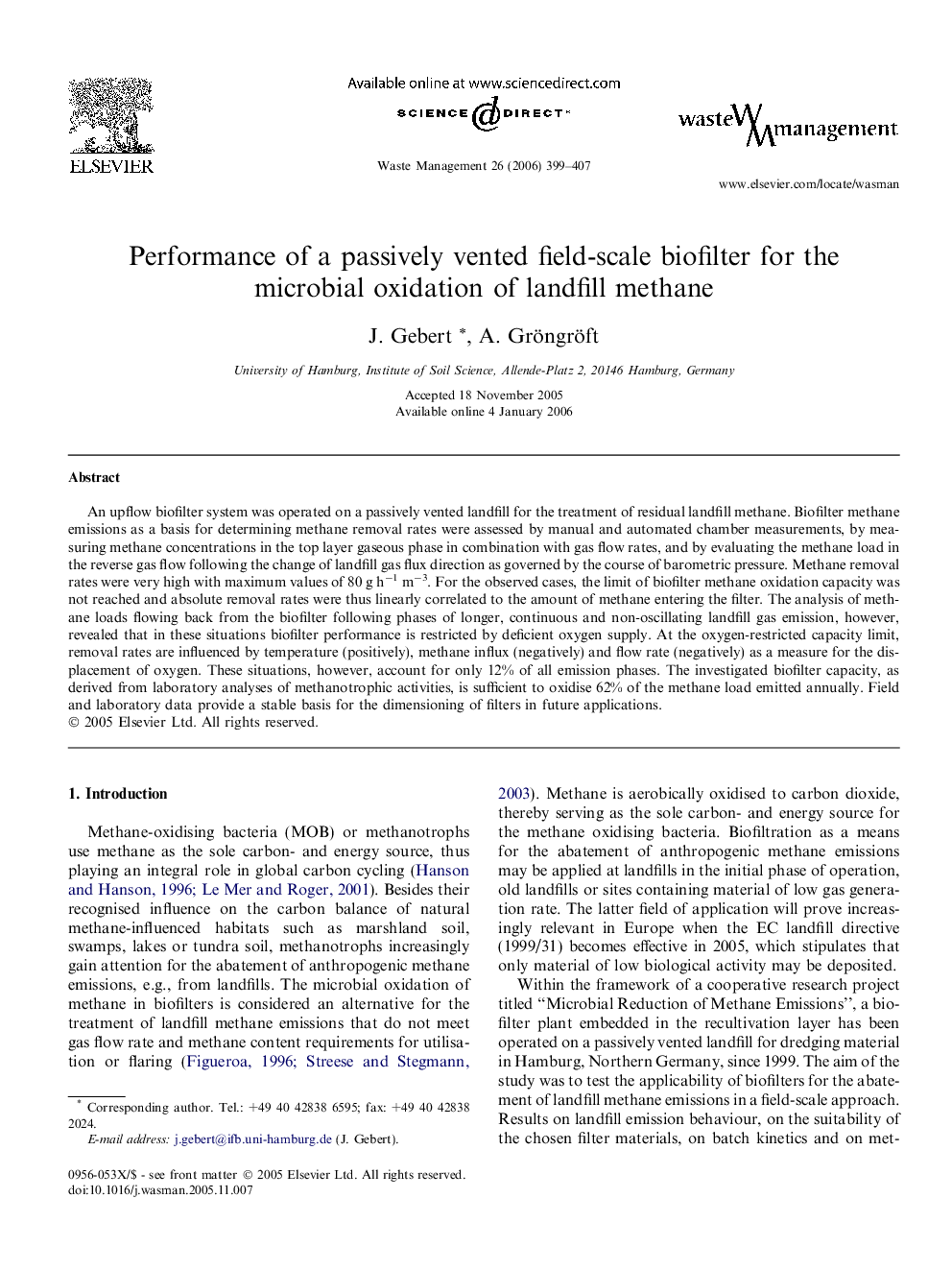| Article ID | Journal | Published Year | Pages | File Type |
|---|---|---|---|---|
| 4473833 | Waste Management | 2006 | 9 Pages |
An upflow biofilter system was operated on a passively vented landfill for the treatment of residual landfill methane. Biofilter methane emissions as a basis for determining methane removal rates were assessed by manual and automated chamber measurements, by measuring methane concentrations in the top layer gaseous phase in combination with gas flow rates, and by evaluating the methane load in the reverse gas flow following the change of landfill gas flux direction as governed by the course of barometric pressure. Methane removal rates were very high with maximum values of 80 g h−1 m−3. For the observed cases, the limit of biofilter methane oxidation capacity was not reached and absolute removal rates were thus linearly correlated to the amount of methane entering the filter. The analysis of methane loads flowing back from the biofilter following phases of longer, continuous and non-oscillating landfill gas emission, however, revealed that in these situations biofilter performance is restricted by deficient oxygen supply. At the oxygen-restricted capacity limit, removal rates are influenced by temperature (positively), methane influx (negatively) and flow rate (negatively) as a measure for the displacement of oxygen. These situations, however, account for only 12% of all emission phases. The investigated biofilter capacity, as derived from laboratory analyses of methanotrophic activities, is sufficient to oxidise 62% of the methane load emitted annually. Field and laboratory data provide a stable basis for the dimensioning of filters in future applications.
